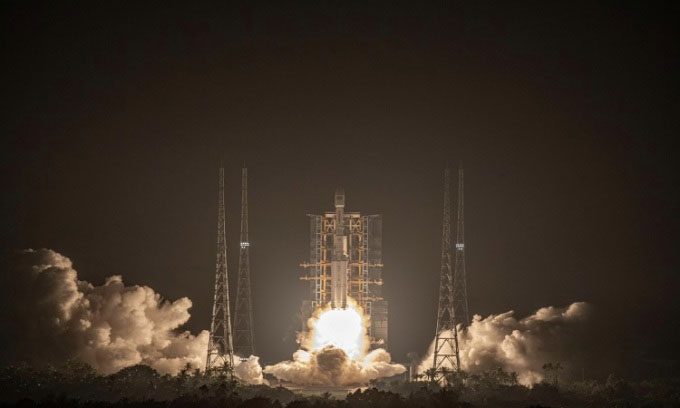Rocket Debris from Long March 7A to Fall Back to Earth with Two Potential Areas Near Residential Zones in the Philippines.

Long March 7A rocket launching from Wenchang launch site. (Photo: SpaceFlightNow)
The Philippine Space Agency announced on September 13 that the debris is believed to belong to the Long March 7A (CZ-7A) rocket launched on the same day from the Wenchang Space Launch Site in China. The mission of this rocket was to carry the Zhongxing-1E satellite, which provides high-quality communication services such as television and data transmission in orbit.
After the Long March 7A rocket successfully deployed the satellite into orbit, the debris continued to circle the Earth, and it is unclear when or where it will re-enter the atmosphere. The Philippine Space Agency is closely monitoring the rocket debris and has identified that it could fall approximately 71 km from Burgos province or about 52 km from Santa Ana. According to them, while the debris is unlikely to land on land or residential areas in the Philippines, it still poses a significant threat to shipping, aircraft, fishing boats, and many other vessels passing through the drop zone.
Typically, rockets are designed to fall in a controlled manner after releasing their payload into orbit, burning up in the atmosphere in a predetermined area such as uninhabited seas. However, the risk to human safety is increasing. In July, scientists calculated a 10% chance of accidents occurring during the re-entry of space debris over the next ten years. They published their findings in the journal Nature Astronomy. Although the risk is very small, the increasing number of rocket launches from governments and private sectors means that the risk of accidents is also rising. The risk is particularly high near the equator.
This is not the first time that China’s space activities have raised concerns about the uncontrolled re-entry of rocket debris. On July 30, the core stage weighing 22.5 tons of the Long March 5B rocket fell into the Philippine Sea, while several debris pieces were discovered in Malaysia. There were no reports of casualties, but the debris fell near villages and could have caused damage if it had landed a few hundred meters off target, according to astrophysicist Jonathan McDowell from Harvard University.
The launch on September 13 of the Long March 7A rocket marks the fourth mission of this new generation rocket, which China first launched in June 2016.


















































